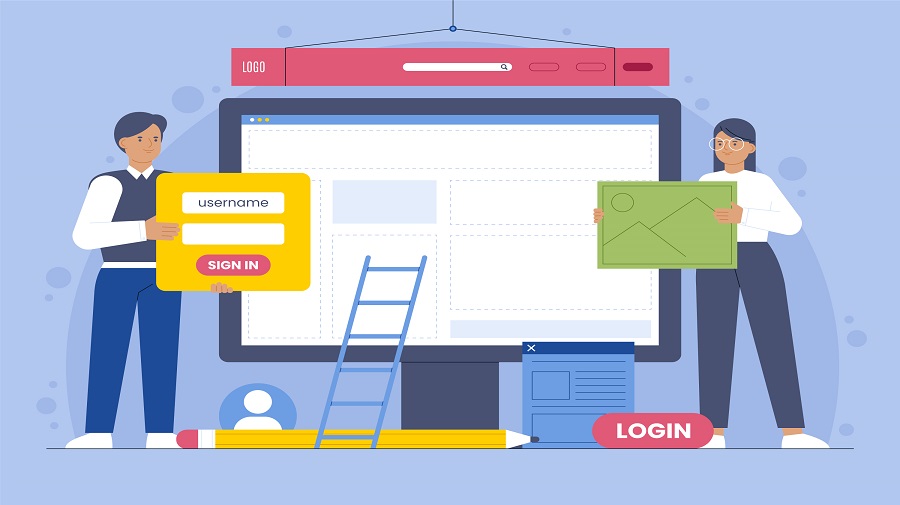CSS Custom Properties (Variables): Enhancing Design Flexibility

In the ever-evolving landscape of web development, staying adaptable and maintaining consistent design standards across different components of a website is a challenge that developers and designers continually face. This is where the power of CSS Custom Properties, also known as CSS Variables, comes into play. In this extensive blog post, we will dive deep into the concept of CSS Custom Properties, exploring their fundamental principles, the myriad benefits they offer, practical applications through real-world examples, advanced techniques, and their role in transforming design flexibility.
The Foundation of CSS Custom Properties
At its core, CSS Custom Properties introduce a groundbreaking way to declare and reuse variables within your stylesheets. These variables allow for the creation of dynamic, responsive, and highly maintainable designs that can adapt effortlessly to varying requirements and changes.
The Declaration Process Demystified
Declaring CSS Custom Properties is a pivotal step towards enhancing design flexibility within your stylesheets. To declare these properties, you employ the — prefix followed by a meaningful variable name. The :root selector is often used to ensure global availability of these variables.
| :root {
–primary-color: #007bff; –font-family: ‘Helvetica Neue’, sans-serif; } |
Harnessing the Power of CSS Custom Properties
After the declaration, these variables can be harnessed within any rule set, leading to a more consistent and adaptable design throughout the stylesheet.
| .header {
background-color: var(–primary-color); font-family: var(–font-family); } |
The Multifold Advantages of CSS Custom Properties
1. Consistency and Reusability: Elevating Design Standards
One of the primary advantages of CSS Custom Properties lies in their ability to establish design consistency by centralizing essential values. This reusability ensures that color schemes, typography choices, and other design elements remain uniform across diverse sections of the website.
2. Fluid Theme Switching: Transforming User Experiences
The ability to seamlessly switch between different themes is a remarkable feature of CSS Custom Properties. By adjusting a handful of variable values, the entire visual identity of a website can be transformed to cater to varying user preferences or seasonal design trends.
3. Responsive Design Made Effortless: Design for Every Device
Responsive design necessitates the adjustment of values such as margins, padding, and font sizes across different screen sizes. CSS Custom Properties significantly simplify this process by allowing developers to modify a limited set of variables, ensuring that the design maintains its coherence across a diverse range of devices.
4. Sustainable Maintainability and Scalability: The Path to Efficient Development
Maintaining a sprawling stylesheet as a website expands can be overwhelming. CSS Custom Properties offer an elegant solution by centralizing essential values. When updates are necessary, changes can be executed in a single location, effortlessly propagating throughout the stylesheet.
Illuminating Real-World Scenarios
1. Dynamic Color Schemes: Catering to User Preferences
Consider developing a website with multiple color schemes. CSS Custom Properties provide an ideal solution by enabling the definition of color variables for each scheme. Transitioning between different color schemes becomes a breeze with these variables in place.
| .light-theme {
–background-color: #ffffff; –text-color: #333333; }
.dark-theme { –background-color: #121212; –text-color: #ffffff; } |
2. Adaptable Spacing: Ensuring Optimal Visual Balance
Fine-tuning spacing across different sections of a website can be a meticulous task. CSS Custom Properties offer an elegant remedy by allowing the creation of variables for margins and padding. This approach streamlines spacing adjustments, eliminating the need for extensive revisions.
| :root {
–spacing-small: 10px; –spacing-medium: 20px; –spacing-large: 30px; }
.section { margin-bottom: var(–spacing-medium); } |
Embracing Advanced Techniques
1. Conditional Styles Using CSS Variables: Adapting to User Preferences
The versatility of CSS Custom Properties extends to conditional styling. By altering variable values based on distinct conditions, dynamic changes in design can be achieved. For instance, adjusting color schemes during nighttime hours can enhance user experiences.
| @media (prefers-color-scheme: dark) {
:root { –background-color: #121212; –text-color: #ffffff; } } |
2. Calculation and Scaling with Variables: Designing for Varied Contexts
CSS Custom Properties can incorporate mathematical calculations, enabling the creation of adaptable designs that automatically adjust based on screen dimensions or user preferences.
| :root {
–base-font-size: 16px; }
p { font-size: calc(var(–base-font-size) * 1.25); } |
Expanding the Narrative: Going Beyond the Basics
Understanding CSS Custom Properties is just the beginning. As you dive deeper into the realm of design flexibility, you’ll find that there are countless innovative techniques and applications waiting to be explored. From dynamic transitions to animation control, from intricate layout adjustments to personalized user experiences, CSS Custom Properties provide the foundation for pushing the boundaries of web design.
Dynamic Transitions with CSS Variables
One captivating application of CSS Custom Properties lies in creating dynamic transitions. By using variables to define transition durations, timing functions, and other animation-related properties, you can achieve smooth and captivating transitions that enhance the overall user experience.
| :root {
–transition-duration: 0.3s; –transition-timing: ease-in-out; }
.button { transition: background-color var(–transition-duration) var(–transition-timing); }
.button:hover { background-color: #ff9900; } |
Empowering Animation Control
Animating elements on a web page adds a layer of interactivity and engagement. CSS Custom Properties can be employed to control animation parameters, allowing for dynamic adjustments that align with user interactions.
| :root {
–animation-duration: 1s; –animation-timing: cubic-bezier(0.25, 0.1, 0.25, 1); }
@keyframes slide-in { from { transform: translateX(-100%); } to { transform: translateX(0); } }
.slide { animation: slide-in var(–animation-duration) var(–animation-timing); } |
Achieving Layout Mastery
Responsive design often involves tweaking layouts to ensure optimal display across various devices. CSS Custom Properties enable the creation of layout-related variables, streamlining the process of adjusting widths, heights, and positioning.
| :root {
–max-width: 1200px; –sidebar-width: 300px; }
.container { max-width: var(–max-width); }
.sidebar { width: var(–sidebar-width); } |
Personalizing User Experiences
User preferences vary widely, and accommodating them is a hallmark of exceptional user experiences. With CSS Custom Properties, you can allow users to customize elements like background colors, font sizes, or even entire themes, contributing to a sense of ownership and personalization.
| :root {
–user-background-color: #ffffff; –user-font-size: 16px; }
.user-preference { background-color: var(–user-background-color); font-size: var(–user-font-size); } |
Conclusion: Pioneering Design Evolution with CSS Custom Properties
In the dynamic realm of web development, where adaptability and consistent design standards are paramount, CSS Custom Properties emerge as a beacon of design flexibility. By embracing these variables, developers transcend traditional styling constraints, offering websites that are visually captivating, adaptable to diverse contexts, and remarkably maintainable. CSS Custom Properties empower developers to craft designs that seamlessly evolve with changing requirements, design trends, and user expectations.
As your journey in custom website development unfolds, integrating CSS Custom Properties into your toolkit becomes more than just a choice – it becomes a strategic decision to revolutionize your design process. These properties extend an open invitation to explore new dimensions of design freedom, creativity, and efficiency. They allow you to stand at the forefront of design evolution, offering unique, adaptable, and user-centric solutions that align perfectly with your clients’ needs.
As you embark on your web development journey, let CSS Custom Properties be your guide to a world where design possibilities are limited only by your imagination. Embrace the power of CSS Custom Properties, and carve your path towards shaping the future of web design, all while delivering exceptional custom website development services that resonate with clients and users alike.




